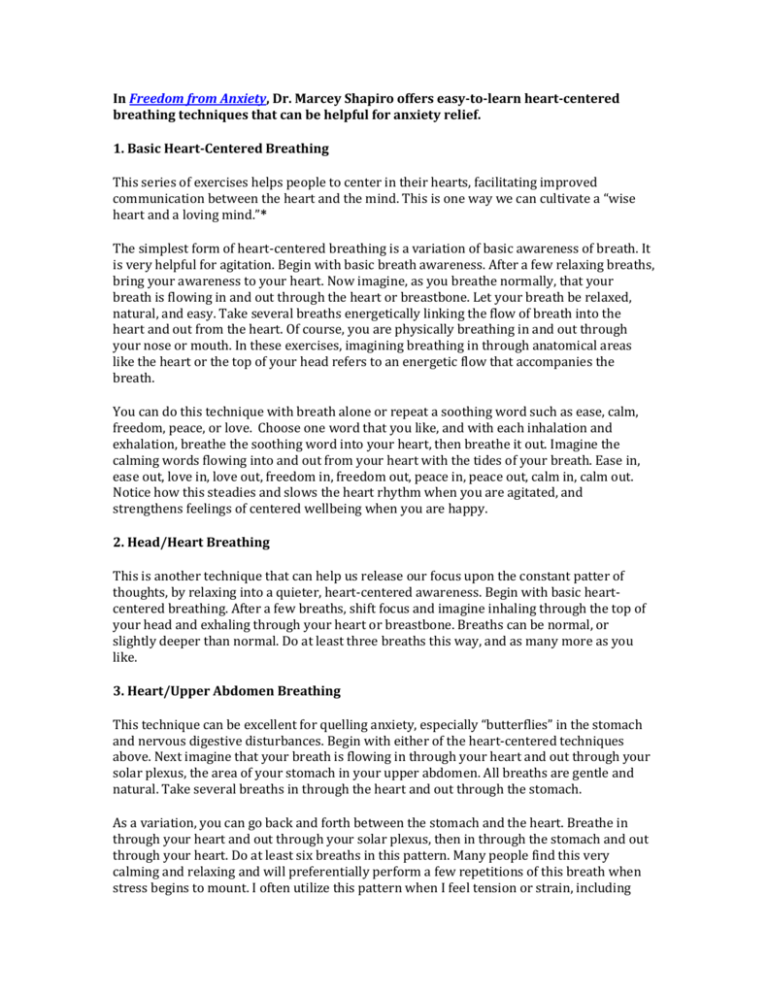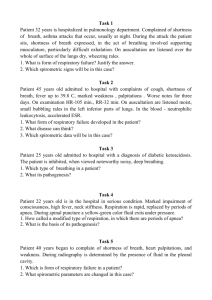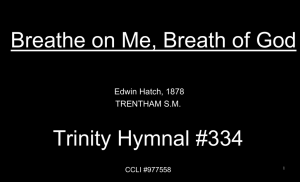Heart-centered Breathing - Positive Spiral Hypnosis
advertisement

In Freedom from Anxiety, Dr. Marcey Shapiro offers easy-to-learn heart-centered breathing techniques that can be helpful for anxiety relief. 1. Basic Heart-Centered Breathing This series of exercises helps people to center in their hearts, facilitating improved communication between the heart and the mind. This is one way we can cultivate a “wise heart and a loving mind.”* The simplest form of heart-centered breathing is a variation of basic awareness of breath. It is very helpful for agitation. Begin with basic breath awareness. After a few relaxing breaths, bring your awareness to your heart. Now imagine, as you breathe normally, that your breath is flowing in and out through the heart or breastbone. Let your breath be relaxed, natural, and easy. Take several breaths energetically linking the flow of breath into the heart and out from the heart. Of course, you are physically breathing in and out through your nose or mouth. In these exercises, imagining breathing in through anatomical areas like the heart or the top of your head refers to an energetic flow that accompanies the breath. You can do this technique with breath alone or repeat a soothing word such as ease, calm, freedom, peace, or love. Choose one word that you like, and with each inhalation and exhalation, breathe the soothing word into your heart, then breathe it out. Imagine the calming words flowing into and out from your heart with the tides of your breath. Ease in, ease out, love in, love out, freedom in, freedom out, peace in, peace out, calm in, calm out. Notice how this steadies and slows the heart rhythm when you are agitated, and strengthens feelings of centered wellbeing when you are happy. 2. Head/Heart Breathing This is another technique that can help us release our focus upon the constant patter of thoughts, by relaxing into a quieter, heart-centered awareness. Begin with basic heartcentered breathing. After a few breaths, shift focus and imagine inhaling through the top of your head and exhaling through your heart or breastbone. Breaths can be normal, or slightly deeper than normal. Do at least three breaths this way, and as many more as you like. 3. Heart/Upper Abdomen Breathing This technique can be excellent for quelling anxiety, especially “butterflies” in the stomach and nervous digestive disturbances. Begin with either of the heart-centered techniques above. Next imagine that your breath is flowing in through your heart and out through your solar plexus, the area of your stomach in your upper abdomen. All breaths are gentle and natural. Take several breaths in through the heart and out through the stomach. As a variation, you can go back and forth between the stomach and the heart. Breathe in through your heart and out through your solar plexus, then in through the stomach and out through your heart. Do at least six breaths in this pattern. Many people find this very calming and relaxing and will preferentially perform a few repetitions of this breath when stress begins to mount. I often utilize this pattern when I feel tension or strain, including when I need to share potentially upsetting health diagnoses with my patients. Breathing in this manner helps me to stay centered and compassionate. 4. Heart/Lower Abdomen Breathing Breathing between the heart and lower abdomen may help with feeling more grounded, embodied, and connected to the earth. This technique may be done after the previous heartcentered breaths, in a sequence, or performed alone. When doing this as a stand-alone exercise, begin with a few basic heart-centered breaths. Next, breathe in through your heart and out through your lower abdomen, below the navel. Repeat at least three times. When performing this in a sequence with other techniques, do each of the above breaths three to ten times, one after another. Follow this sequence with three to ten breaths in through your heart and out through your lower abdomen, below the navel. This last step may be performed along with deep abdominal breathing, or done as an energetic flow of normal breath. Relax and enjoy this sequence. If there are any types of breath that you do not like or find difficult, just skip them. 5. Heart/Health Breaths You can breathe between your heart or a chakra and any anatomical area of concern or discomfort. For example, if you have a sore knee, a shoulder injury, or even a serious illness like breast or prostate cancer, imagine breathing love and light into the affected area and releasing this breath through the heart. Then reverse the flow to send the insight and love of the heart to the area that is exhibiting an imbalance. In this case, it is best not to think of your health concern as a “problem.” Instead, you might reframe this and consider it an area where there is misunderstanding between the physical you and the emotional or spiritual you. Many people find breathing between an area of misunderstanding and the heart very soothing. It may also help with insight that can expedite healing of the situation. If you try this technique and no insight comes right away, don’t fret. These breaths can help you feel calmer and improve your self-awareness. By doing the breathing exercises, you are augmenting the energetic flow of communication between your heart and the affected region. The details of information or insight may come later. Be creative and have fun with these techniques. Feel free to expand on any of them, perhaps including more than two areas. For example, if you have an unresolved hip pain, you might try breathing in a triangle between the hip and heart, heart and third eye, and third eye and hip. This connects the heart, area of concern, and the intuition and can be a wonderful catalyst for inspiration. If you do this, it may be helpful to pay attention to dreams and subtle impressions that you might perceive over the next few days.






